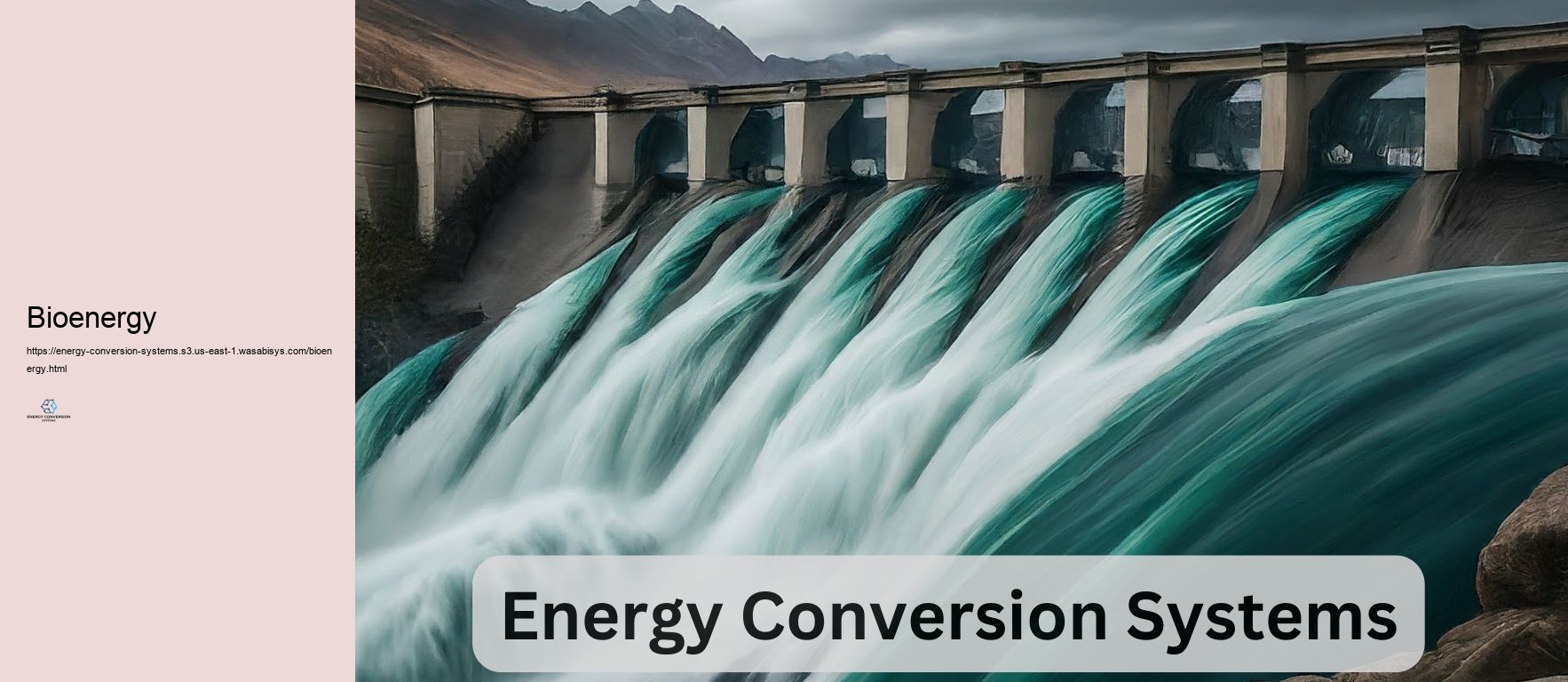

Energy conversion systems play an essential responsibility in modern culture, permitting the remodeling of numerous types of energy right into much better and functional kinds. These systems are necessary to power generation, transport, commercial procedures, and daily modern-day technologies. Comprehending the principles and applications of energy conversion systems is crucial for engineers, policymakers, and anyone thinking of the field of energy. At its core, energy conversion is governed by the guidelines of thermodynamics. The first regulation of thermodynamics, which states that energy can not be developed or damaged nonetheless only changed from one type to another, is the foundation of all energy conversion systems. Bioenergy The second law introduces the principle of intensifying and effectiveness, defining why no energy conversion treatment can be 100% reliable. These standard principles underpin the style and procedure of all energy conversion systems. Amongst one of the most common and significant energy conversion systems is the thermal nuclear power plant. These centers transform the chemical energy kept in nonrenewable fuel sources (such as coal, oil, or natural gas) or nuclear gas right into electrical energy. The treatment normally includes losing the gas to heat water, developing vapor that drives a generator attached to a generator. This system, based upon the Rankine cycle, is an archetype of changing thermal energy to mechanical energy and after that to electrical energy. Modern thermal nuclear reactor employ many approaches to boost effectiveness, such as supercritical vapor troubles and combined cycle systems. Renewable energy systems represent an additional vital team of energy conversion. Solar solar (PV) panels convert light energy straight right into electrical energy through the photoelectric impact. Wind wind turbines change the kinetic energy of relocating air into mechanical energy and afterwards right into power. Hydroelectric nuclear power plant harness the feasible energy of water saved at elevation, transforming it to power via wind generators and afterwards to electric energy. Each of these systems has its distinct principles and problems, however all please of changing naturally happening energy into much more valuable kinds. Inside burning engines, thoroughly made use of in transportation and some power generation applications, change the chemical energy in gas right into power via regulated explosions. These engines, whether fuel or diesel, operate thermodynamic cycles (such as the Otto cycle or Diesel cycle) that consist of compression, melting, growth, and exhaust phases. The performance of these engines has been regularly enhanced using improvements in products, gas injection systems, and exhaust gas treatment technologies. Fuel cells stand for an ingenious energy conversion system that directly converts chemical energy right into electrical energy without melting. These devices usage electrochemical reactions to generate electrical power, with hydrogen being a common gas. Fuel cells have applications varying from mobile source of power to huge taken care of power generation, and they provide the opportunity for high effectiveness and reduced discharges. Heatpump and refrigeration systems are energy conversion systems that relocation heat from one area to an added, successfully converting electric energy right into thermal energy transfer. These systems, which operate on the vapor compression cycle or absorption cycle, are extensively made use of for heating, air conditioning, and refrigeration in residential, service, and industrial setups. The efficiency of heatpump is typically revealed as a coefficient of efficiency (POLICE), which can be above one, as they step cozy as opposed to generate it straight. Electrochemical energy conversion systems, such as batteries and supercapacitors, play a critical duty in energy storage space and portable power applications. These tools transform chemical energy into electrical energy (throughout discharge) and vice versa (throughout billing). The ideas of electrochemistry govern their treatment, with continual research focusing on boosting energy density, power density, and cycle life. Thermoelectric tools stand for a distinct kind of energy conversion, directly transforming temperature degree differences into electric energy (Seebeck result) or using electric energy to produce a temperature level difference (Peltier result). While currently limited in performance, these solid-state gadgets have applications in waste heat recuperation, cooling systems, and location expedition. Magnetohydrodynamic (MHD) generators are a sophisticated energy conversion system that right converts thermal energy right into electric energy without relocating parts. By passing a high-temperature, electrically conductive liquid with a magnetic field, these systems develop electrical energy. While still considerably speculative, MHD generators hold guarantee for high-temperature, high-efficiency power generation. The application of energy conversion systems extends across various markets. In the power generation market, enormous thermal, nuclear, and renewable energy systems supply power to the grid. In transport, internal combustion engines, electrical electric motors, and developing developments like gas cells power cars and trucks. Industrial procedures depend on a wide variety of energy conversion systems for home heating, cooling, and powering machinery. In the domestic and industrial sectors, cooling and home heating systems, illumination, and gadgets all include energy conversion. Performance enhancement is a constant focus in the growth of energy conversion systems. This involves not just improving the performance of details components nonetheless similarly enhancing entire systems and incorporating different modern technologies. As an example, incorporated heat and power (CHP) systems increase basic energy use by recording waste warm from electric power generation for home heating or industrial treatments. The eco-friendly impact of energy conversion systems is a dramatically essential factor to consider. Lots of initiatives are concentrated on decreasing tires from fossil fuel-based systems, enhancing the efficiency and integrity of renewable resource systems, and developing new, cleaner modern technologies. The concept of life process analysis is essential in reviewing actual eco-friendly influence of various energy conversion systems, thinking of elements such as resource removal, manufacturing, treatment, and disposal. Energy conversion systems are basic to contemporary human being, enabling the usage of numerous energy sources to meet human demands. From massive power generation to individual digital devices, these systems are ubiquitous in our lives. As modern technology breakthroughs and eco-friendly problems expand, the area of energy conversion remains to progress, with continuous {research and development targeted at enhancing efficiency, lowering ecological impact, and utilizing brand-new energy sources. Recognizing the concepts and applications of these systems is important for dealing with the energy difficulties of the future and relocating in the direction of a far more lasting energy landscape.
Energy conversion technologies are at the center of changing how we harness and utilize energy, playing a necessary feature in the change in the direction of lasting and reliable energy systems. From photovoltaics to gas cells, these technologies include a varied selection of tools that transform natural energy resources into beneficial kinds, such as electric energy, warmth, and gas. Each innovation runs special principles and is matched to specific applications, utilizing unique benefits and barriers. Recognizing these technologies is crucial for progressing energy solutions that attend to worldwide energy requirements while decreasing ecological result. Photovoltaics (PV) stand for amongst one of the most extensively determined types of solar energy conversion. These systems use semiconductor products, normally silicon, to transform sunlight straight right into power through the solar effect. When sunlight strikes the area of a PV cell, it thrills electrons, creating an electric existing. Solar innovation has actually sophisticated considerably throughout the years, with advancements in items and design produce enhanced efficiency and minimized expenses. Emerging modern-day technologies, such as thin-film solar batteries and natural photovoltaics, are pushing the limitations of efficiency and adaptability, making solar power a lot more easily available and flexible to various applications, from household roofings to huge solar cattle ranches. Concentrated solar power (CSP) is one more solar power conversion modern-day technology that differs from photovoltaics by utilizing mirrors or lenses to concentrate sunshine onto a little area, typically a receiver. The concentrated light is exchanged warm, which is then made use of to generate steam that drives a wind turbine connected to an electric generator. CSP systems are particularly reliable in areas with high direct sunlight and can include thermal energy storage treatments to supply power also when the sunlight is not beaming. This capability to keep energy as warm authorizations CSP plants to supply an extra stable and relied on power result contrasted to conventional solar PV systems. Fuel cells are a functional energy conversion technology that develops electricity with an electrochemical response, generally consisting of hydrogen and oxygen. Unlike combustion-based power generation, gas cells produce electrical power without melting gas, causing lowered discharges and higher performance. There are a number of types of gas cells, each set apart by the electrolyte made use of and the operating temperature level variety. Polymer electrolyte membrane (PEM) gas cells, for example, are acknowledged for their high power density and are commonly made use of in transportation applications, such as fuel cell automobiles. Solid oxide gas cells (SOFCs), on the numerous other hand, operate at greater temperature degrees and ideal for fixed power generation and commercial applications. Hydroelectric power is a trustworthy energy conversion technology that makes the most of the kinetic energy of streaming water to produce power. By guiding water via wind turbines, hydroelectric plants convert the energy of moving water right into mechanical energy, which is after that changed right into electrical energy by generators. This innovation is extremely effective and can supply a constant and relied on power supply, making it a foundation of renewable resource accounts in numerous countries. However, the ecological influence of large hydroelectric tasks, such as environment interruption and changes to water environmental areas, necessitates mindful preparing and keeping track of. Wind energy conversion modern technologies document the kinetic energy of wind utilizing wind generators, which change it right into mechanical energy and ultimately into electric energy. Wind generators are usually mounted in areas with solid and constant wind patterns, such as seaside areas and open plains. Improvements in generator style, such as larger blades diameters and taller towers, have significantly improved the effectiveness and ability of wind power generation. Offshore wind ranches are similarly acquiring traction, supplying the capacity for considerable energy generation with marginal land use impact. Geothermal energy conversion usage the Planet internal cozy to produce electrical power and deal direct home heating applications. Geothermal power plants utilize hefty vapor or hot water from underground storage tanks to drive wind turbines and produce electrical energy. This advancement is really effective and can supply a regular power supply, as geothermal sources are exempt to the variability seen in solar and wind energy. On top of that, geothermal systems can be used for straight heating applications, such as area heating and greenhouse farming, more improving their flexibility. Biomass energy conversion includes making use of natural products, such as plant and pet waste, to produce warmth, electric energy, or biofuels. Biomass can be converted into energy through different procedures, including combustion, gasification, and anaerobic food digestion. This technology usages the benefit of utilizing waste products and can contribute to squander administration options. However, the sustainability of biomass energy counts on the source of the biomass and the techniques used for farming and harvesting. Tidal and wave energy conversion modern-day innovations harness the energy of sea patterns and waves to produce electrical power. Tidal nuclear power plant commonly use barrages or underwater wind turbines to record the energy of relocating water, while wave energy converters essence energy from the surface task of waves. These advancements are still in the developing stages yet hold promise for offering a trustworthy and predictable resource of renewable resource, particularly for seaside regions. The landscape of energy conversion innovations varies and swiftly developing, driven by the need for lasting and effective energy options. From photovoltaics and concentrated solar power to gas cells and hydroelectric systems, each modern technology deals one-of-a-kind benefits and problems. By advancing these modern innovations and integrating them right into the international energy system, we can relocate in the direction of a much more lasting and durable energy future, minimizing our reliance on nonrenewable fuel sources and lessening environmental influence. As {research and development remain to press the limits of what is possible, the capacity for ingenious energy conversion solutions to change our energy landscape continues to be huge and appealing.
Energy conversion systems are indispensable to contemporary society, playing a crucial role in transforming raw energy sources right into functional power that fuels homes, markets, and transportation. These systems include a huge range of technologies and procedures developed to transform energy from one type to one more, such as transforming chemical energy in gas to mechanical energy in engines or electric energy in nuclear reactor. A thorough evaluation of the vital components in energy conversion systems exposes the intricacy and course related to efficiently taking advantage of and using energy resources. Comprehending these parts is essential for maximizing efficiency, increasing performance, and reducing ecological impact. The starting element of any kind of energy conversion system is the energy resource, which can be sustainable or non-renewable. Renewable energy sources include solar, wind, hydroelectric, geothermal, and biomass, while non-renewable resources encompass nonrenewable gas resources like coal, oil, and natural gas, in addition to atomic energy. The choice of energy source dramatically affects the format and procedure of the conversion system, as each resource has unique attributes, such as schedule, energy thickness, and ecological effect. For instance, solar energy systems rely on photovoltaic cells or solar thermal collection agencies to capture sunlight, while fossil fuel-based systems usage shedding treatments to launch energy conserved in chemical bonds. At the heart of any energy conversion system is the energy conversion gizmo, which changes the primary energy source into a different kind of energy. Normal conversion devices include wind turbines, engines, generators, and fuel cells. Generators, used in both nonrenewable fuel source and renewable energy systems, change kinetic energy from hefty vapor, water, or wind right into mechanical energy, which is then changed right into electrical energy by generators. Internal burning engines, common in transport, convert chemical energy from gas right into mechanical energy with regulated surges. Fuel cells, on the numerous other hand, straight transform chemical energy from hydrogen or various other gas right into electrical power through electrochemical reactions, giving high performance and low wears down. Heat exchangers are essential components in many energy conversion systems, particularly those requiring thermal processes. These tools promote the transfer of cozy in between 2 or a lot more fluids without mixing them, improving the effectiveness of energy conversion. In nuclear power plant, warmth exchangers are used to transfer heat from burning gases to water, generating vapor that drives wind turbines. In a/c systems, they relocation warm in between indoor and outside settings, controling temperature level and boosting energy effectiveness. The style and product selection for warm exchangers are crucial for boosting warmth transfer rates and lessening energy losses. Control systems are essential for the safe and trustworthy operation of energy conversion systems. They watch on and regulate different specifications, such as temperature level, stress, flow price, and voltage, assuring that the system runs within specified restrictions and responds suitably to changes demanded or operating problems. Advanced control systems make use of sensing units, actuators, and algorithms to boost performance, boost dependability, and lower energy intake. In modern nuclear power plant, digital control systems allow real-time security and automation, allowing motorists to make data-driven decisions and carry out anticipating upkeep strategies.
BioenergyDiscover the latest advancements in energy conversion systems, from solar and wind to fuel cells and biomass! Learn how these innovations are driving sustainable energy solutions for a cleaner, more efficient future.https://t.co/9SfMjPHIu9
— Turbine Training And Operation (@turbinetraine) August 25, 2024
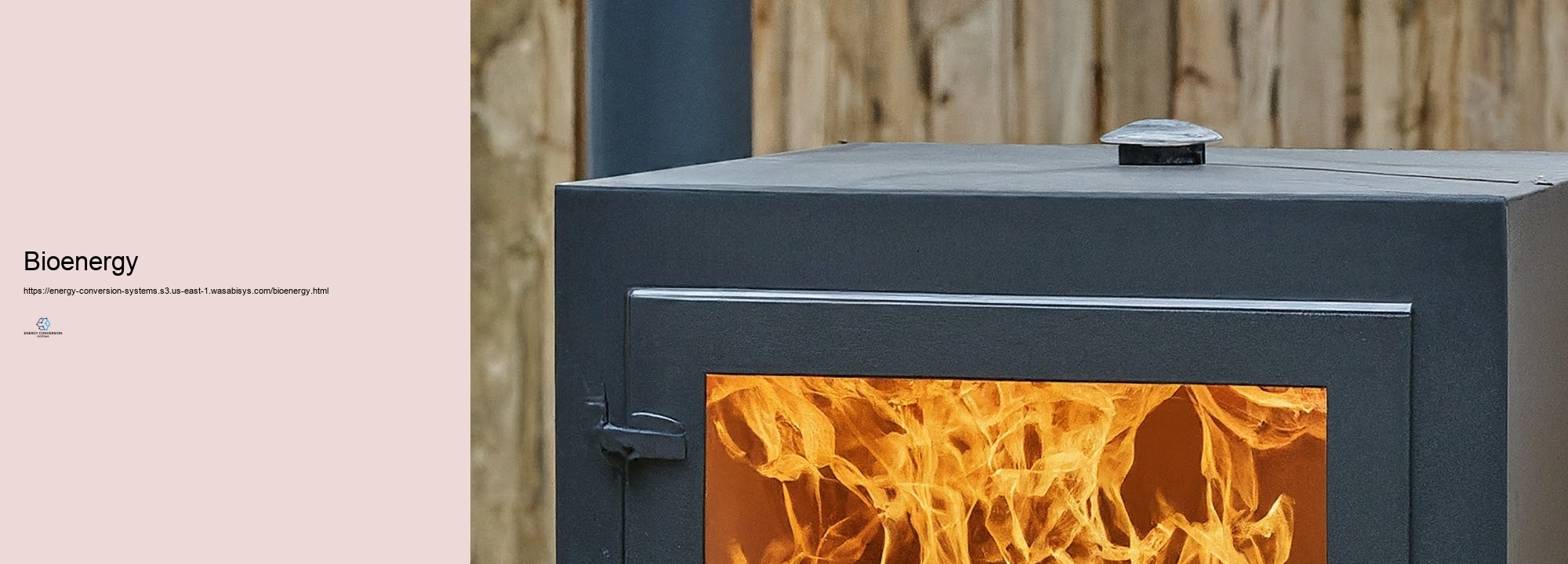
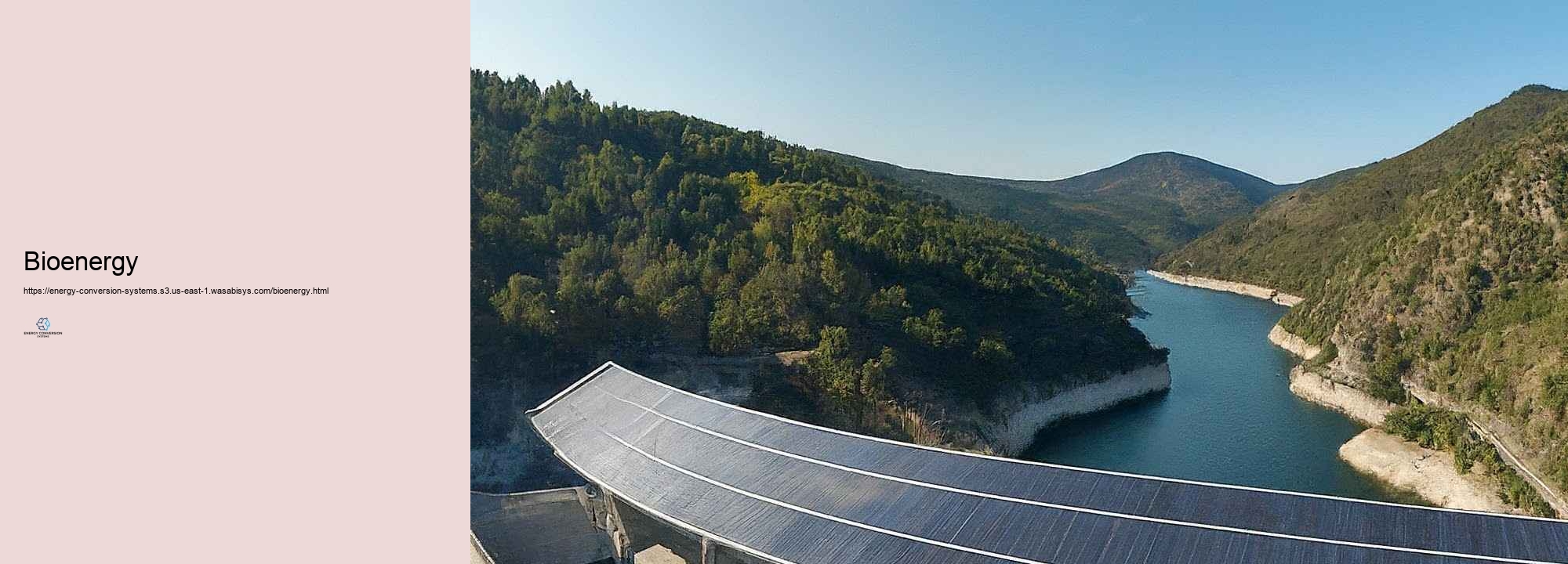
Improving performance in energy conversion is an essential objective in the search of lasting and inexpensive energy making. As worldwide energy need continues to climb, increasing the performance of energy conversion procedures has really become considerably essential for lowering source usage, reducing ecological influences, and making sure energy protection. This venture encompasses a substantial variety of strategies and advancements across countless energy markets, from standard fossil fuel-based systems to renewable resource technologies. Among the primary locations of emphasis for enhancing energy conversion performance is in thermal power plants, which remain to be a significant source of electric energy worldwide. Advanced melting innovations, such as supercritical and ultra-supercritical vapor cycles, have actually been produced to increase the effectiveness of coal-fired nuclear power plant. These systems run at greater temperature level levels and pressures than standard plants, enabling far better thermal performance and lowered gas usage. Similarly, consolidated cycle gas wind turbine (CCGT) plants, which usage both gas and hefty steam generators, can attain performances of around 60%, substantially greater than standard single-cycle plants. Waste heat healing systems represent an added crucial strategy for improving energy conversion performance. In numerous business procedures and power generation systems, a substantial quantity of heat is shed to the atmosphere. By executing modern technologies such as natural Rankine cycles (ORC) or thermoelectric generators, this waste cozy can be captured and exchanged valuable electrical energy. This not just enhances general system performance but likewise lowers the need for extra energy input, bring about established you back cost savings and decreased ecological impact. In the realm of renewable energy, continuous advancements are driving improvements in energy conversion efficiency. For solar solar or pv (PV) systems, technologies in cell layout and products have created stable increases in conversion performance. Multi-junction cells, which make use of numerous layers of semiconductor materials to record various areas of the solar array, have established efficiencies exceeding 40% in lab setups. Emerging contemporary innovations such as perovskite solar cells program guarantee for additionally efficiency improvements and rate declines in solar energy conversion. Wind energy conversion has in fact additionally seen significant performance enhancements by means of technical modern technologies. Larger turbine sizes, progressed blade designs, and enhanced control systems have actually enhanced the capacity element of wind ranches. In addition, the development of overseas wind modern technology has opened up brand-new possibilities for taking advantage of extra effective and much more continuous wind sources, better boosting energy conversion effectiveness. In the location of energy storage space, which is essential for handling the intermittency of renewable energy resources, many methods are being gone after to improve effectiveness. Advanced battery innovations, such as solid-state batteries and circulation batteries, offer the prospective for greater energy density, much faster charging rates, and much longer lifespans contrasted to normal lithium-ion batteries. These improvements can cause far more efficient energy storage area and circulation systems, reducing losses in the energy conversion chain. Hydrogen production and fuel cell innovations represent another area of growth in energy conversion performance. While conventional hydrogen production with vapor methane changing is relatively inadequate, new techniques such as high-temperature electrolysis and solar thermochemical water splitting reveal assurance for a lot even more reliable hydrogen production. On the use side, developments in gas cell technology, particularly in proton exchange membrane layer (PEM) gas cells, are improving the performance of transforming hydrogen right into electrical energy for numerous applications, consisting of transport and dealt with power generation. The idea of cogeneration, or incorporated warm and power (CHP), is a vital technique for boosting general energy conversion performance. By simultaneously generating electricity and practical warmth from a solitary fuel resource, CHP systems can acquire general performances of as much as 80%, substantially greater than various cozy and power generation. This technique is specifically effective in industrial configurations and location heating unit, where there is a regular demand for both electrical energy and warmth. Developments in materials scientific research are playing a vital duty in improving energy conversion efficiency across different developments. High-temperature superconductors, as an example, have the possible to drastically minimize energy losses in power transmission and distribution systems. Nuclear Power Plants Likewise, the development of sophisticated products for generator blades, solar cells, and fuel cells is making it feasible for better running temperature levels, improved toughness, and improved efficiency in energy conversion procedures. The mix of skilled system (AI) and artificial intelligence formulas right into energy systems is another cutting-edge method to enhancing conversion performance. These innovations can boost the procedure of nuclear power plant, renewable resource systems, and grid networks in real-time, transforming requirements to maximize performance based upon existing conditions and need patterns. Anticipating upkeep powered by AI can furthermore aid secure versus tools failings and preserve peak efficiency, extra contributing to general system effectiveness. Smart grid technologies and demand-side keeping an eye on approaches are likewise critical for enhancing energy conversion effectiveness at the system degree. By allowing much better interaction and control between energy producers and clients, creative grids can boost energy circulation, reduced transmission losses, and better integrate renewable energy resources. Need action programs, which incentivize customers to adjust their energy usage based upon grid troubles, can help stabilize supply and demand a whole lot more successfully, decreasing the need for much less effective peaking nuclear power plant. The concept of energy plunging, where waste energy from one process is taken advantage of as input for one more, is getting grip as a strategy for boosting overall system efficiency. Industrial harmony, where multiple markets exchange energy and sources, exemplifies this strategy. As an example, waste cozy from a power plant could be utilized for area home heating or business treatments, taking advantage of the use of energy inputs. Improving the performance of end-use modern technologies is also vital for basic energy conversion performance. This contains developing a lot more reputable tools, lighting systems, and industrial tools. The considerable adoption of LED lights, as an example, has significantly reduced energy intake in the illumination market. In a comparable method, the advancement of a whole lot even more reliable electrical electric motors and variable rate drives has improved energy conversion performance in commercial applications. Improving performance in energy conversion is a diverse obstacle that requires a mix of technological innovations, system-level optimizations, and strategy support. From improvements in common power generation modern-day technologies to developments in renewable energy and energy storage space systems, several approaches and developments are being pursued to take full advantage of the performance of energy conversion procedures. As these technologies remain to advance and establish, they will certainly play a crucial duty in building an extra lasting and effective energy future. The recurring quest of improved energy conversion efficiency not only adds to environmental sustainability yet furthermore improves energy protection and financial competition in a progressively energy-dependent world.
The combination of renewable resource resources right into conversion systems is a transformative strategy enhancing the around the world energy landscape. As the globe looks for lasting options to meet boosting energy requirements while minimizing environmental affects, the duty of renewable energy in conversion systems winds up being critically crucial. This combination involves incorporating environmentally friendly sources such as solar, wind, hydro, and biomass with standard energy systems to produce crossbreed systems that make the most of energy producing, boost performance, and minimize carbon discharges. By leveraging the staminas of both environmentally friendly and standard energy resources, these systems supply a course to an extra long lasting and lasting energy future. Crossbreed energy systems go to the leading edge of incorporating renewable energy resources right into conversion systems. These systems include numerous energy sources to supply a steady and trusted power supply. For example, solar panels can be paired with wind generators to enhance each different other, as solar power is numerous throughout the day while wind energy can be utilized in the evening or throughout cloudy days. By incorporating these resources, hybrid systems can decline reliance on nonrenewable fuel sources, reduced greenhouse gas wears down, and supply a much more constant energy supply. Heat Engines In addition, hybrid systems normally include energy storage space solutions, such as batteries or thermal storage room, to store excess energy produced throughout leading production times for usage throughout periods of low renewable resource availability. This ability improves the integrity and flexibility of the energy supply, making it a lot more immune to variations in renewable resource generation. The effective combination of renewable energy resources right into conversion systems furthermore counts heavily on growths in grid combination and smart modern-day technologies. Modern power grids are establishing to healthy the variable nature of renewable energy resources. Smart grids, prepared with innovative sensing units, interaction modern technologies, and automation, make it feasible for real-time monitoring and management of energy circulations. This licenses the efficient assimilation of renewable resource into the grid, stabilizing supply and demand dynamically. Smart modern-day innovations furthermore advertise need activity approaches, where clients change their energy use based upon availability and cost signals, better improving using renewable energy. By improving grid versatility and strength, these modern innovations support the smooth combination of renewables, making certain a protected and reliable energy supply. Energy storage space treatments play an important role in the assimilation of renewable resource resources right into conversion systems. The repeating nature of renewable energy, such as solar and wind, needs the requirement for reputable storage space choices to make sure a consistent energy supply. Advanced battery modern technologies, such as lithium-ion and circulation batteries, supply effective storage selections that can store excess energy generated throughout peak producing times and release it when needed. Furthermore, thermal energy storage systems, such as molten salt storage, are made use of in addition to concentrated solar power (CSP) plants to save heat for electrical power generation throughout non-sunny periods. These storage solutions not just enhance the dependability and security of renewable resource systems yet additionally enable greater penetration of renewables right into the energy mix, lessening reliance on nonrenewable fuel sources and minimizing carbon discharges. The assimilation of renewable resource sources is additionally driving the change towards decentralized energy systems. Unlike typical central power generation, decentralized systems create energy closer to the factor of intake, reducing transmission losses and increasing energy performance. Roof solar panels, little wind generators, and community-based renewable resource jobs are instances of decentralized systems that motivate clients to generate their own energy. This decentralization improves energy defense, lessens grid obstruction, and makes it possible for much better consumer participation in the energy market. By integrating renewable energy resources right into decentralized systems, neighborhoods can achieve greater energy independence and durability, adding to a far more lasting and fair energy future. The assimilation of renewable energy resources right into conversion systems is supported by favorable strategy and governing structures. Federal federal governments around the world are using strategies that encourage the cultivating of renewable resource, such as feed-in tolls, tax responsibility rewards, and environment-friendly profile standards. These plans produce a conducive environment for financial investment in renewable energy tasks and market {research and development in innovative modern technologies. Moreover, regulative structures are progressing to in shape the distinctive features of renewable energy, such as grid association requirements and internet metering plans. By providing a stable and supportive plan atmosphere, federal governments can quicken the assimilation of renewable energy resources right into conversion systems, driving the shift to a lasting energy future. The mix of renewable energy resources right into conversion systems offers significant ecological and economic advantages. By decreasing reliance on nonrenewable fuel sources, these systems lowered greenhouse gas discharges, adding to atmosphere modification decrease and boosted air high quality. Making use of renewable resource also reduces water usage and reductions the ecological result of energy producing. Financially, the assimilation of renewables generates opportunities for task growth and financial development in the clean energy field. The declining expenditures of renewable energy modern technologies, combined with improvements in energy storage and grid mix, make renewable resource progressively competitive with typical energy sources. As a result of this, the combination of renewables right into conversion systems not just maintains eco-friendly sustainability however also boosts energy price and financial durability. Regardless of the countless advantages, the combination of renewable energy sources right into conversion systems faces several difficulties. These include the variability and intermittency of renewable resource, the demand for substantial framework financial investments, and the complexity of taking care of diverse energy sources. Nonetheless, reoccuring {research and development initiatives are solving these troubles, paving the way for additional effective and credible combination. The future possible clients for renewable energy assimilation are motivating, with continued technologies in innovation, plan assistance, and market characteristics driving the change to a long lasting energy future. As renewable resource becomes a crucial component of conversion systems, it will definitely play a crucial feature in conference global energy needs while safeguarding the atmosphere and advertising financial growth. The assimilation of renewable energy sources right into conversion systems is a transformative procedure that uses a pathway to a much more lasting, credible, and long lasting energy future. By leveraging hybrid systems, wise modern-day technologies, energy storage space remedies, and encouraging strategy structures, the combination of renewables can enhance energy production, reduce exhausts, and improve energy safety. As the world continues to focus on sustainability and setting activity , the assimilation of renewable energy right into conversion systems will absolutely be an important licensed operator of the global energy shift, developing a cleaner and much more lasting future for generations in advance.
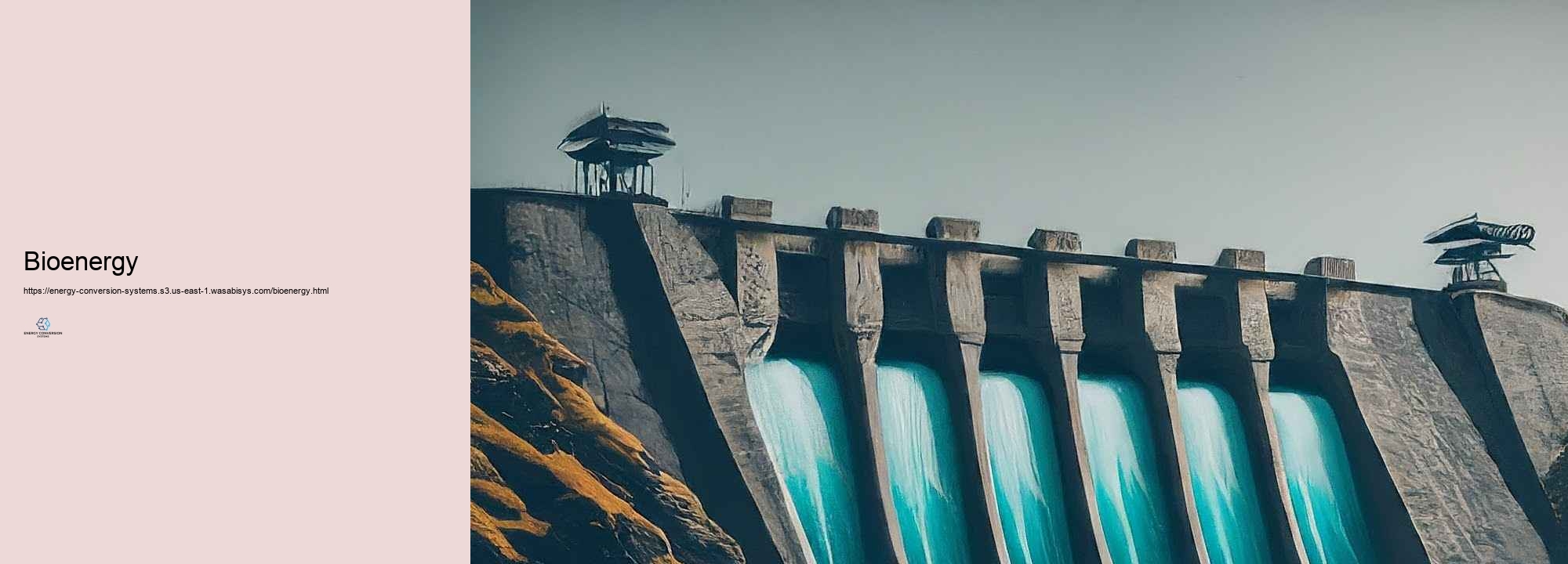
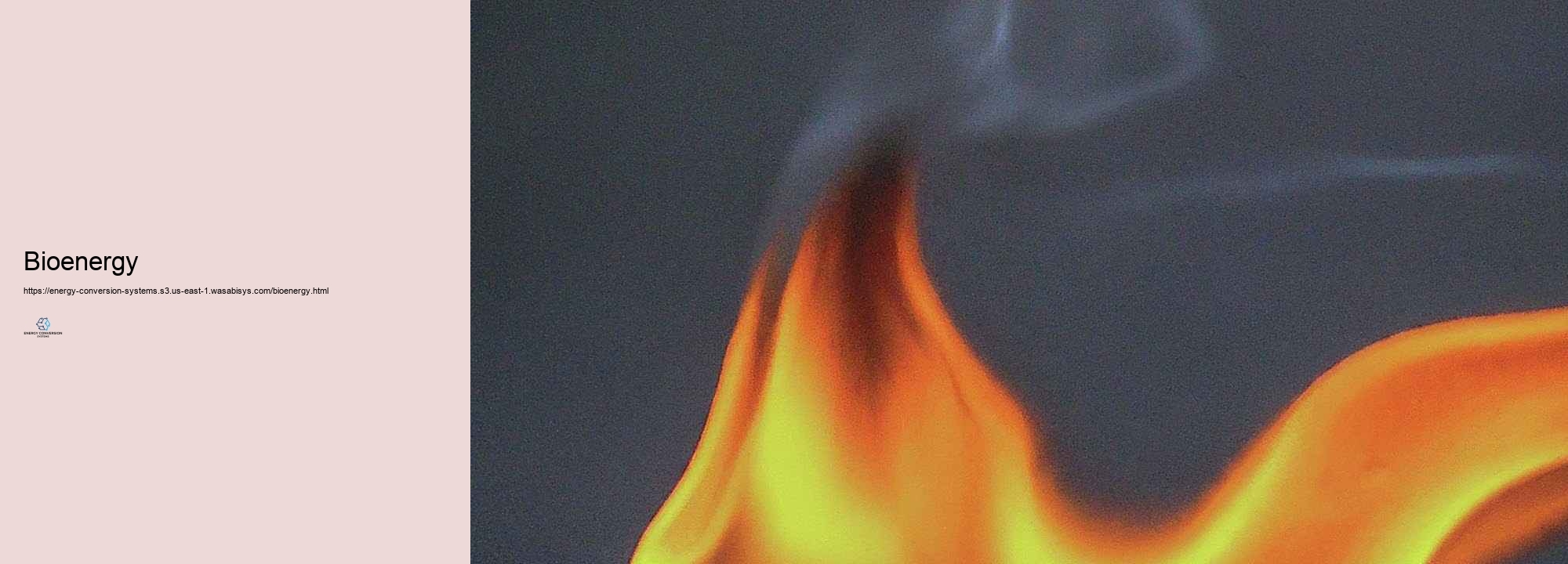
Energy conversion system design is a complex field that faces various difficulties in the goal for added reputable, lasting, and affordable services. As international energy needs stay to climb and eco-friendly issues increase, developers and scientists are tasked with developing ingenious methods to remove these barriers. This introduction checks out the vital difficulties in energy conversion system design and the arising solutions that are creating the future of energy modern technology. One of the major problems in energy conversion system layout is increasing efficiency. All energy conversion procedures involve some degree of energy loss, as dictated by the regulations of thermodynamics. For thermal systems, such as nuclear reactor, this ineffectiveness is regularly appeared as waste warmth. Handling this challenge calls for a varied method. Advanced items that can endure higher temperature level degrees and tension are being created, allowing added efficient thermodynamic cycles. As an example, supercritical and ultra-supercritical vapor cycles in coal-fired nuclear power plant can complete higher performances by operating at extremely high temperatures and stress.
The impact of energy conversion systems on eco-friendly sustainability is extensive and multifaceted, influencing everything from greenhouse gas wears down and source fatigue to atmosphere health and biodiversity. As the around the world demand for energy remains to climb, driven by population development and financial growth, the requirement for lasting energy services comes to be gradually immediate. Energy conversion systems, which change raw energy resources into helpful types such as electrical energy, warmth, and gas, play a vital task in this adjustment. By evaluating the ecological impacts of numerous energy conversion modern-day innovations, we can better comprehend their settlements to sustainability and identify courses for enhancement. Traditional energy conversion systems, especially those trusting nonrenewable fuel resources such as coal, oil, and natural gas, have really traditionally been considerable elements to ecological wear and tear. The burning of these fuels launches considerable amounts of carbon dioxide (CO2) and various other greenhouse gases right into the environment, driving setting change and its connected influences, such as climbing up around the world temperature levels, sea-level surge, and severe climate condition celebrations. Furthermore, nonrenewable fuel source extraction and handling can bring about habitat damage, soil and water contamination, and air contamination, additional worsening ecological difficulties. On the various other hand, renewable energy conversion systems, such as solar, wind, hydroelectric, and geothermal, usage much more lasting choices by harnessing all-natural energy streams that are abundant and replenishable. These systems typically create little bit to no straight wears down during procedure, significantly reducing their carbon impact contrasted to fossil fuel-based innovations. As an example, solar photovoltaics and wind generators generate electrical power without shedding gas, remaining clear of the launch of CARBON DIOXIDE and numerous other toxins. Hydroelectric power, while mostly emission-free throughout treatment, should be meticulously handled to minimize possible eco-friendly results, such as adjustments in water circulation and fish migration patterns. The transition to renewable resource conversion systems is important for accomplishing ecological sustainability, as it lines up with efforts to reduce greenhouse gas discharges and constraint worldwide warming. By changing fossil fuel-based systems with renewables, we can lower the concentration of co2 in the environment, reducing the growth of climate change and its unsafe outcomes on atmospheres and human cultures. Furthermore, renewable energy systems frequently demand much less land and water than common energy resources, decreasing their general environmental effect and maintaining all-natural atmospheres. Nevertheless, the execution of renewable energy conversion systems is not without its obstacles. The production, installment, and maintenance of these systems can have eco-friendly effects, including source removal, waste generation, and land use modifications. For instance, the manufacturing of photovoltaic panels includes making use of unusual and limited materials, such as silicon and silver, along with perhaps dangerous chemicals. Wind turbine manufacturing demands considerable amounts of steel and concrete, and their installment can impact local wildlife and landscapes. To solve these concerns, it is important to tackle lasting methods throughout the lifecycle of renewable resource systems, from style and manufacturing to deactivating and reusing. Energy storage area systems, which are important to the trusted mix of renewable resource right into the grid, additionally have environmental results. Batteries, for instance, depend on products like lithium, cobalt, and nickel, the removal and handling of which can cause eco-friendly deterioration and social obstacles. Establishing additional lasting battery innovations, such as those based upon abundant and secure products, and improving reusing procedures are important activities towards decreasing the environmental impact of energy storage room. Past exhausts and resource usage, energy conversion systems can additionally impact ecological sustainability with their influences on biodiversity and areas. Large energy jobs, whether lasting or fossil-based, can reason environment fragmentation, wild pets variant, and changes in land usage patterns. As an instance, the building of hydroelectric dams can flood huge locations of land, interrupting terrestrial and water communities.
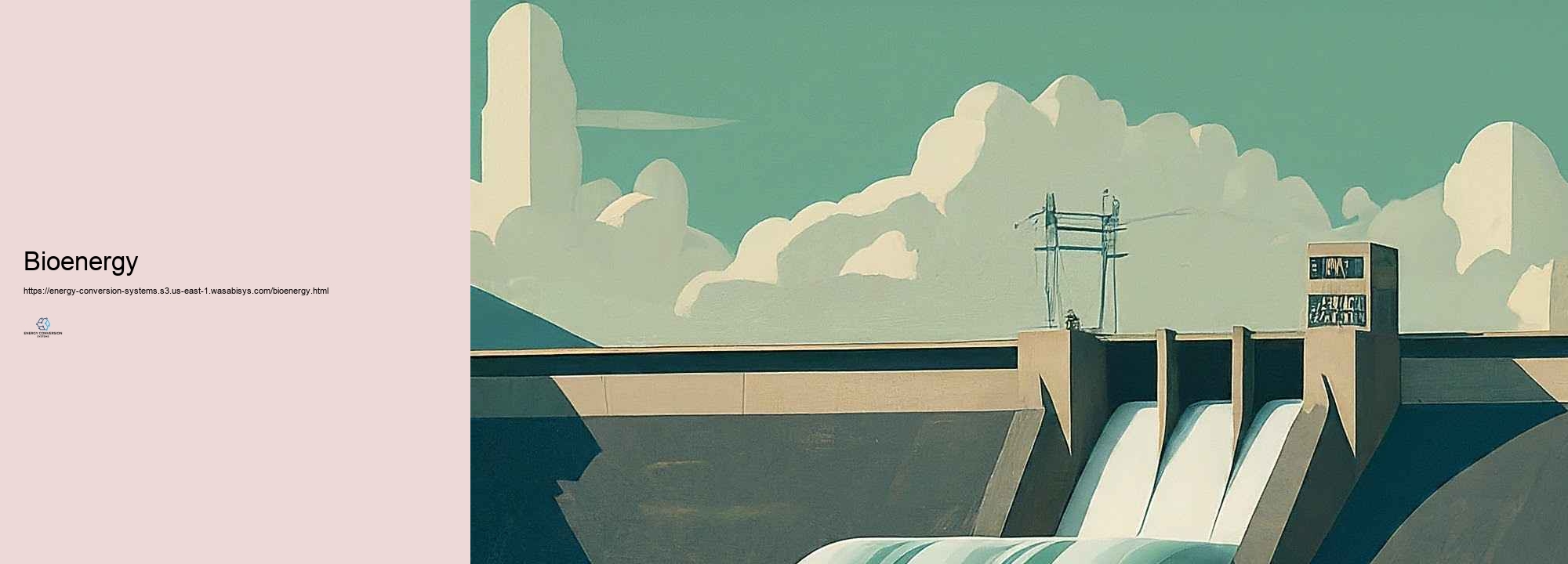
Energy conversion systems are technologies or processes that transform one form of energy into another, such as converting solar energy into electricity or mechanical energy into electrical energy.
Common types of energy conversion systems include solar photovoltaic panels, wind turbines, fuel cells, hydroelectric power systems, and geothermal energy converters.
Energy conversion systems improve efficiency by optimizing the process of converting energy from one form to another, reducing waste, and enhancing the overall output of usable energy.
Energy conversion systems are crucial in renewable energy as they enable the transformation of natural energy sources like sunlight, wind, and water into electricity, supporting sustainable power generation.
Challenges include optimizing efficiency, minimizing energy loss, integrating with existing grids, managing costs, and ensuring reliability and sustainability of the energy sources used.